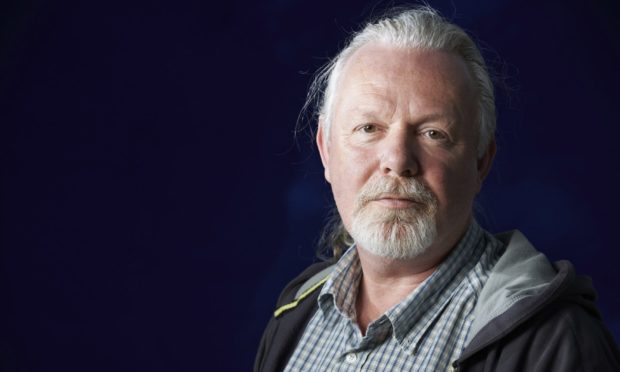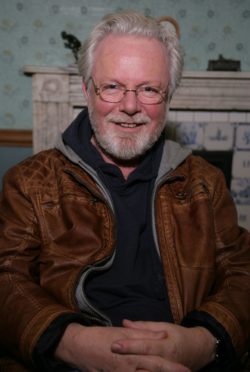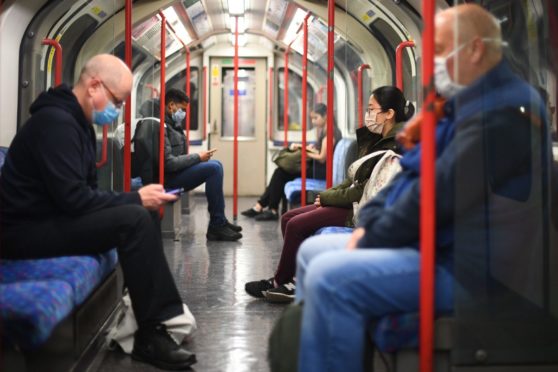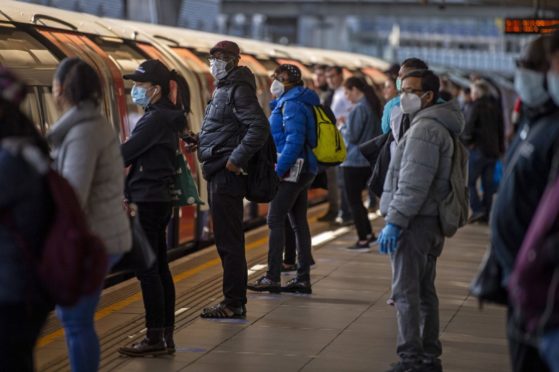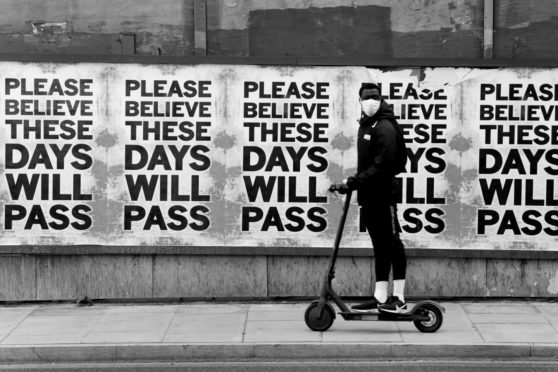Most of us could never have imagined that the world would be enveloped by a deadly pandemic throughout 2020.
If anybody had suggested 18 months ago that millions of people would succumb to Covid-19, even as governments were forced to close down vast parts of their economies, the notion would have been dismissed as the stuff of science fiction.
Yet one man not only predicted that a pandemic would wreak havoc, but wrote a book about it called Lockdown – and that was back in 2005.
But although Scottish author Peter May has sold millions of books in his career, he had no luck with that novel 15 years ago, with publishers describing it as “unrealistic.”
Spanish Flu pandemic was eerily similar to Covid
Understandably, they have now revised their opinion and the novel has finally been released, even if its creator told me this week he would rather “it had never seen the light of day and the Covid crisis had never happened”.
Mr May, who was the driving force behind the creation of the Gaelic TV soap opera Machair, is currently “hunkering down” in Paris, aghast at the fashion in which so many governments have reacted to what is often described as an “unprecedented situation”.
As he pointed out, it’s nothing of the sort; the parallels between this outbreak and the Spanish Flu pandemic from 1918-20 are eerily similar for those who know their history.
He said: “Schools were closed, businesses were shut down, transport systems ground to a halt, people wore masks and, in some towns in the United States, guards with guns were placed at the entry points to make sure that nobody came into the communities.
Most governments have been ‘extraordinarily bad’
“But what happened then was very similar to what is happening now.
“There was a first wave in the winter of 1918, then everything was opened up again, and the virus returned, and then, eventually, there was a third and a fourth wave.
“I really hope we can avoid it lasting that long, but I can’t say I’m confident, given the extraordinarily bad way that most governments across the world have dealt with Covid-19.”
Lockdown might originally have been consigned to oblivion, but Mr May’s crime novel paints a remarkably prescient picture. Set against the backdrop of a bird flu pandemic with London in complete lockdown, the virus he portrays is far deadlier than Covid-19.
However, his depiction of a country struggling to grapple with a silent killer and his explanations for the spread of the disease are uncannily prophetic.
As he wrote: “We’ve created the perfect incubators for breeding and passing on infection, in the buses and planes and underground trains that we travel on.
“A human disaster waiting to happen.”
Health Protection Agency ‘would have helped’ with Covid
At the time he was carrying out his initial research, scientists were warning that bird flu would be the cause of the next international health crisis.
Thankfully, it was avoided, but Mr May believes that vital lessons were ignored in the process.
He added: “If had it come to pass, the consequences would have been catastrophic.
“The H5N1 virus is, perhaps, less infectious than the current coronavirus, but is many times more dangerous – with a mortality rate of anything between 60% and 80%.
“But the scenario that I described in the book is not drawn from my imagination. It was based upon detailed pandemic planning which was done by both the British and the Americans in the early 2000s. These documents painted the horrific picture that I used to colour in the detail of Lockdown.
“Lots of work was done to prepare for a pandemic, but sadly, the UK Health Protection Agency, which was established in 2003 precisely to deal with infectious diseases and environmental hazards, was scrapped [by health minister Jeremy Hunt] in 2013.
“Their plans had shown that the NHS could not cope with the impact of a major pandemic, and they were trying to find ways of helping the health professionals. But austerity meant the agency was axed and I think we’re paying the price for that now.”
Incredible sense of frustration about Covid
The author admitted he had forgotten about his unpublished book and it wasn’t until “someone on Twitter” suggested he write a thriller set against the backdrop of a coronavirus lockdown that he remembered he had already done it.
Suddenly, what he had outlined in 2005 was no longer “OTT” or “unrealistic”. It was actually sparking a grim toll and inflicting misery and restrictions on billions of people.
Yet, despite concerted efforts to tackle the virus, Mr May has been dismayed by the slowness of governments to wake up to the crisis and is among those who feel that allowing Britons greater freedom over Christmas will simply lead to more deaths.
He said: “I can’t be the only person who has sat and watched with a incredible sense of frustration as this situation has developed and the response of governments, in Britain, in America, in so many parts of Europe, has been all over the place.
“When this first emerged in China in 2019, and it started to spread west, Covid-19 was like a slow-moving tsunami. Everybody saw it, everybody heard about how many people were dying and yet there was no sense of urgency.
Thank heavens – and science – for a vaccine
“And when they did eventually respond, it came too late, and much of the damage was already done. And the same mistakes are still being made at the moment. What is all this obsession with Christmas and having parties? All that is going to do is condemn more people to death. Haven’t we realised how serious this actually is?
“Thank heavens – and science – that we have a vaccine, so there is light at the end of the tunnel. I am looking forward to celebrating Christmas on a beach somewhere…maybe in July. But this isn’t the time – in the middle of winter – to be lifting our guard.”
Peter’s sometimes ahead of the curve
Mr May has penned a new novel in recent months and is hoping to return to his native Scotland to renew old acquaintances in the New Year.
He was initially cautious about Lockdown being published at all, alarmed at the thought he might be perceived as exploiting a tragedy, but the proceeds from the book are going to charities helping deal with Covid-19.
And he played down his Nostradamus powers when we talked.
He said: “When I originally wrote Lockdown, no matter how well researched or accurate the dystopian picture it painted was, no one could identify with it.
“Now everyone can. It has become our common experience, something we have all seen at first hand. And isn’t that what writers are supposed to do – describe and explore the human condition, the world we experience as a human race?
“I don’t claim the prescience that my writing history might suggest. But my interest in medical and scientific subjects, and the detailed research I have done for my books, sometimes puts me a little ahead of the curve.
“As I sit here in France, confined to my own home – like so many other people all around the world – I can only hope that there is a better outcome for us all than my book might predict.”
No more spoilers. But he, like the rest of us, will be very glad to move into 2021.
Further information about the book can be found here.
